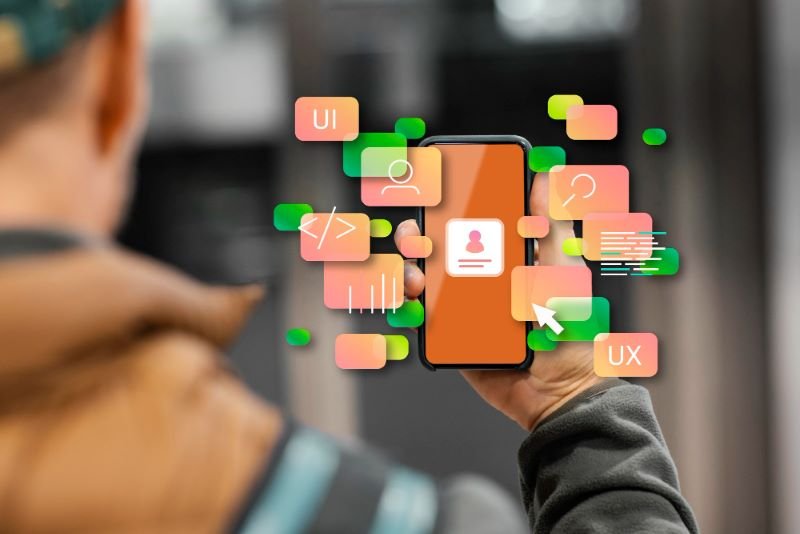
mobile app trends
Mobile app development is evolving faster than ever, driven by emerging technologies, consumer demands, and the growing need for personalized user experiences. Staying ahead of mobile app trends is crucial for businesses and developers looking to create innovative, user-friendly applications. Whether it’s the adoption of 5G, the growth of AI-driven features, or the rise of wearable tech, understanding these trends can provide a competitive edge. In this blog, we’ll dive into the top mobile app trends shaping the future of development in 2024 and beyond.
1. The Expansion of 5G Technology
5G technology is revolutionizing the way mobile apps are developed and used. Offering speeds up to 100 times faster than 4G, 5G enables more complex and data-heavy applications to run smoothly. This trend is driving a shift in user expectations, as apps are now expected to provide real-time interactions, minimal latency, and ultra-high-speed performance.
Key Benefits of 5G for Mobile App Development:
- Enhanced User Experience: Faster data transfer speeds result in smoother interactions, from video streaming to high-resolution gaming.
- Improved Augmented Reality (AR) and Virtual Reality (VR) Experiences: With greater bandwidth and lower latency, 5G supports more immersive AR/VR applications.
- Seamless IoT Connectivity: 5G accelerates the development of Internet of Things (IoT) applications, allowing apps to connect more efficiently with smart devices.
Developers need to consider how to optimize their apps for 5G to provide users with cutting-edge experiences.
2. The Rise of AI and Machine Learning in Apps
Artificial Intelligence (AI) and Machine Learning (ML) are among the most influential mobile app trends. They are becoming essential for delivering personalized and intelligent app experiences. AI can predict user behavior, automate tasks, and improve app functionality through real-time data analysis.
How AI and ML Are Transforming Mobile Apps:
- Personalized User Experiences: AI algorithms analyze user behavior and preferences to offer customized app content and recommendations.
- Voice Assistants and Chatbots: Apps increasingly feature AI-powered virtual assistants like Siri and Google Assistant, providing voice control and interactive help.
- Enhanced Security: AI-based facial recognition, fingerprint scanning, and behavioral analysis help secure apps against potential threats.
Incorporating AI and ML technologies is no longer a choice but a necessity for app developers looking to create more intuitive and secure apps.
3. Mobile Commerce: The Rise of mCommerce Apps
Mobile commerce, or mCommerce, is experiencing significant growth, driven by the increasing popularity of smartphones as shopping tools. Retailers are focusing more on mobile-first strategies to cater to consumers who prefer shopping on their mobile devices.
Key Trends in Mobile Commerce:
- Seamless Payment Solutions: Mobile wallets like Apple Pay and Google Wallet make transactions easier and faster, boosting mCommerce adoption.
- Social Commerce Integration: Apps now enable users to shop directly through social media platforms like Instagram and TikTok, creating a seamless shopping experience.
- Personalized Shopping Experiences: AI and data-driven algorithms in mCommerce apps tailor shopping recommendations and offers to individual users.
As mCommerce continues to grow, businesses that invest in mobile shopping apps can better meet consumer expectations and drive sales.
4. Wearable Technology and Integration with Mobile Apps
Wearable tech, such as smartwatches, fitness trackers, and augmented reality glasses, is becoming increasingly common. These devices rely on mobile apps to deliver real-time data and personalized experiences. As a result, the integration of mobile apps with wearable technology is another major mobile app trend.
How Wearables Are Shaping the Future of Mobile Apps:
- Health and Fitness Monitoring: Apps connected to wearables track health metrics like heart rate, sleep patterns, and exercise routines, helping users stay healthy and active.
- Notifications and Alerts: Wearables allow users to receive notifications, calls, and messages without needing to access their smartphones.
- Personalized User Data: Wearables collect vast amounts of data, enabling apps to offer more tailored experiences based on user preferences and activity levels.
Developers must consider how to integrate their apps with wearable devices to stay competitive in this growing market.
5. The Growth of Augmented Reality (AR) and Virtual Reality (VR) Apps
Augmented Reality (AR) and Virtual Reality (VR) are no longer just gaming technologies; they are expanding into fields like retail, real estate, education, and healthcare. These technologies are transforming how users interact with mobile apps, making AR/VR integration one of the hottest mobile app trends today.
Examples of AR and VR Integration in Apps:
- Retail and E-commerce: AR apps allow users to visualize how furniture would look in their homes or try on clothes virtually.
- Education and Training: VR apps provide immersive learning experiences, helping students and professionals practice skills in a controlled environment.
- Healthcare: AR is being used in apps that assist surgeons with real-time imaging and diagnostics, improving the accuracy of medical procedures.
As AR and VR technologies become more advanced, they will continue to open new possibilities for mobile apps across industries.
6. Blockchain for Enhanced Security and Transparency
Blockchain technology is finding its way into mobile app development, primarily due to its decentralized nature and ability to secure data. As users become more concerned about data privacy and security, blockchain integration is a significant mobile app trend for ensuring transparent and secure transactions.
Applications of Blockchain in Mobile Apps:
- Secure Payments: Blockchain enables secure and traceable financial transactions, particularly in mobile payment and banking apps.
- Decentralized Apps (dApps): dApps use blockchain to ensure that no single entity has control over the app, making them highly secure and resistant to hacking.
- Smart Contracts: Blockchain supports the development of apps that facilitate secure agreements through automated, self-executing contracts.
Blockchain is particularly valuable in industries like finance, healthcare, and supply chain management, where data security is paramount.
7. Super Apps: The All-in-One Solution
Super apps, which combine multiple services into one platform, are increasingly popular, particularly in Asia. These apps offer a range of functions, from social networking and messaging to shopping, banking, and ride-hailing. This trend is expanding globally, and developers are increasingly focused on creating these comprehensive, all-in-one platforms.
Why Super Apps Are Gaining Popularity:
- Convenience: Users can access multiple services without switching between different apps, enhancing their overall experience.
- Data Integration: Super apps collect data from various services to provide more personalized and interconnected experiences.
- Monetization Opportunities: By offering various services, super apps create multiple revenue streams for businesses, from in-app purchases to advertising.
For developers, building a super app requires robust architecture and careful planning to ensure scalability and seamless integration of various services.
8. Cloud-Based Mobile Apps
Cloud technology is changing how mobile apps store and manage data, making cloud-based apps one of the leading mobile app trends in 2024. Cloud apps reduce the need for users to download large files, as data is processed and stored on remote servers.
Advantages of Cloud-Based Apps:
- Lower Device Storage Needs: Users don’t need to install large apps or store excessive data on their devices.
- Faster and Smoother Operation: Cloud-based apps run more efficiently since they offload much of the processing and data storage to the cloud.
- Improved Collaboration: Cloud apps allow multiple users to collaborate on projects in real-time, making them ideal for productivity and business tools.
Cloud technology also enables better data security and easier integration across devices, making it a critical factor in modern app development.
Conclusion
The mobile app industry is continuously evolving, and staying updated with the latest mobile app trends is essential for developers, businesses, and entrepreneurs alike. From the rise of 5G and AI to the growing popularity of AR/VR and blockchain, these trends are driving the future of mobile app development. By understanding and leveraging these trends, businesses can create more innovative, secure, and user-friendly apps that meet the ever-changing demands of today’s consumers.
For more interesting blogs click here.






